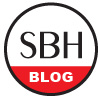Polymerase chain reaction (PCR) has revolutionized molecular biology and diagnostics by amplifying minute quantities of DNA, to levels where they can be easily analyzed. From its introduction in the 1980s, PCR has evolved, and today we have advanced methods like real-time quantitative PCR (qPCR) and digital PCR (dPCR). In this post, we will delve into how dPCR works, and discuss the advantages it offers over real-time qPCR.
Quantified PCR, also known as real-time PCR, amplifies DNA and quantifies it in real time. It is based on the detection of the fluorescence emitted by a reporter molecule, which increases as the DNA or RNA target is amplified. Quantitative PCR works via amplification, detection, and then quantification. During each PCR cycle, the amount of DNA is doubled if the target sequence is present. Fluorescent markers, which increase in intensity proportionally to the amount of PCR product, are used to monitor the process in real time. Lastly the quantity of DNA is estimated based on the number of cycles required to reach a specific level of fluorescence, known as the threshold cycle.
Digital PCR is a molecular technique that partitions a sample of DNA into thousands or millions of individual compartments, such that each compartment contains either one or zero target DNA molecules. Post amplification, dPCR determines the absolute number of target DNA molecules in the sample, by counting the number of positive partitions. The process is built out into 4 main steps: partitioning, amplification, reading and quantification. The DNA sample is first distributed across a large number of partitions, which can be in the form of droplets, chambers, or wells. Each partition can contain either no DNA molecules, one DNA molecule, or multiple molecules.
Next, standard PCR amplification is conducted in each partition independently, such that, if a partition contains the target DNA sequence, it will be amplified. After the amplification, each partition is read to determine if it contains the amplified product or not. Partitions with amplified product are labeled as positive, and those without are labeled negative. Quantification is performed by using the ratio of positive to negative reactions, and the absolute number of target molecules in the sample is then calculated.
There are several advantages that dPCR offers over qPCR. One of the most significant advantages of dPCR is its ability to provide absolute quantification without the need for standard curves, which are required in qPCR. Digital PCR also offers a higher precision. Since dPCR partitions the sample, it can detect and quantify DNA targets with greater precision, particularly when target copies are low. It also can discriminate between samples with very small fold differences, making it more accurate in detecting small changes in gene copy numbers, or subtle variations in gene expression. In samples with a high background of non target DNA, dPCR can be more effective since it can precisely detect and quantify the target DNA molecule.
The sensitivity and precision also make this method adept at detecting rare alleles or mutations in a vast background of wild type DNA. Additionally, although both qPCR and dPCR can support multiplexing, which is the detection of multiple targets in a single reaction, dPCR once again can offer an edge in certain situations due to the unique partitioning technique.
While both real time qPCR and dPCR have their own unique applications and advantages, the choice between the two largely depends on the specific requirements of the experiment. In summary, dPCR offers greater precision, absolute quantification, and can excel in scenarios where sample complexity or rare target detection is a concern. However, real time qPCR, with its faster turnaround and broader dynamic range, remains a go to method for many routine applications.
Here at SBH Sciences, we have the capability to utilize both techniques for your needs. Our laboratory utilizes the Applied Biosystems StepOne Plus Real-Time PCR System. We have extensive experience in designing and performing qPCR assays using both TaqMan and SYBR green detection chemistries. Our qPCR workflow involves RNA extraction and QC, cDNA conversion, primer design and validation, reference gene optimization and data analysis. Additionally, we also have access to the Applied Biosystems QuantStudio Absolute Q Digital PCR System as part of the ABI LAB Innovation lab.
In over 25 years at SBH we have assisted over 300 biotechnology and diagnostics companies and would be happy to assist you in your drug development and discovery endeavors. Please reach out and contact us to discuss your specific needs!
Sources:
https://www.thermofisher.com/us/en/home/life-science/pcr/digital-pcr/quantstudio-absolute-q-system.html
https://www.qiagen.com/us/applications/digital-pcr/beginners/dpcr-vs-qpcr
https://www.bio-rad.com/en-us/life-science/learning-center/digital-pcr-and-real-time-pcr-qpcr-choices-for-different-applications



SHARE